Boy with Baby Carriage by Norman Rockwell
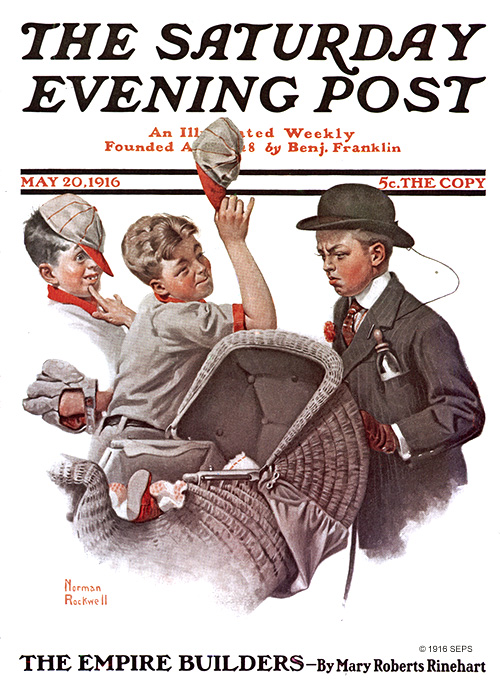
Rockwell was thrilled to see his first Saturday Evening Post cover on May 20, 1916. “Two million subscribers and then their wives, sons, daughters, aunts, uncles, friends. Wow!” he said when the possibility of a Post cover arose. He accomplished this coveted feat at the age of twenty-two. Covers were printed with the two-color process: black and one other color, usually red. They were done in “duotone” until 1926, when the Post’s first color cover was done—again, by Norman Rockwell.
Lady in Red with Fan by N.P. Zarokilli
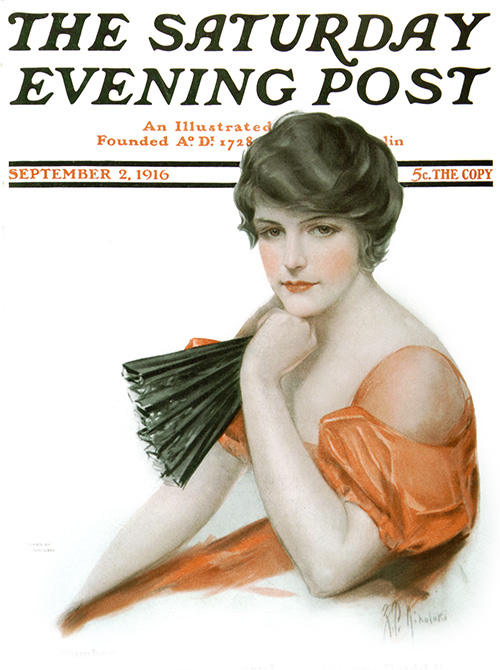
This is not a Rockwell, but a typical magazine cover from 1916. The key ingredients: a pretty lady, a lovely gown, and a possibly a prop, such as a fancy fan. It is a very pretty picture, but young artist Norman Rockwell was different. He did not seek “perfect” models; he looked for “real” faces and characters.
Family Night Out by Norman Rockwell
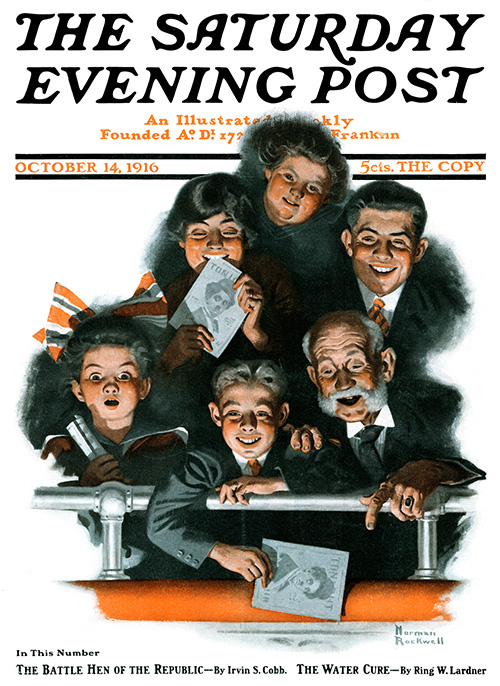
Rockwell’s Family Night Out shows not only real faces, it showed what real people did, like going to the movies. Oh, I’m not saying real people didn’t sit around in a fancy gown holding a fan just so… well, okay, I am saying that. I love the play of light and shadow on the faces and the young girl’s look of amazement as she beholds the magic of theater. If you’ll notice the playbill, you’ll see the family is enjoying the antics of Charlie Chaplin.
Kitty Cooldown by Parker Cushman
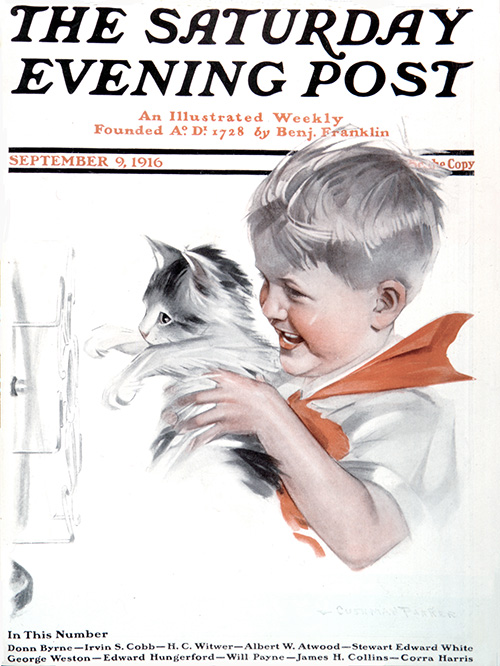
There is absolutely nothing wrong with this 1916 cover by an artist named Parker Cushman. In fact, it’s downright adorable. A beautiful, well-dressed, blonde boy holding up a fluffy kitten for a “cool down” in front of the fan—what’s not to like? But contrast this cutie to one of Rockwell’s models below.
Backfence Grafitti by Norman Rockwell
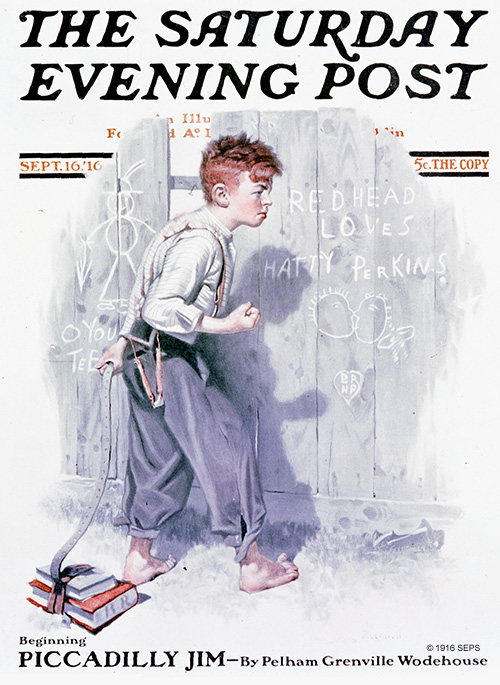
No one has to explain a Rockwell cover. You can tell the whole story at a glance. That’s just how the artist wanted it. And the boy—red hair, freckles, barefoot, and wearing clothes that have seen better days—had a genuine temper. I think he’s going to get the rat who linked his name with Hattie Perkins and drew the kissy-faced art on the fence. And when he does, it won’t be pretty.
The Circus Barker by Norman Rockwell
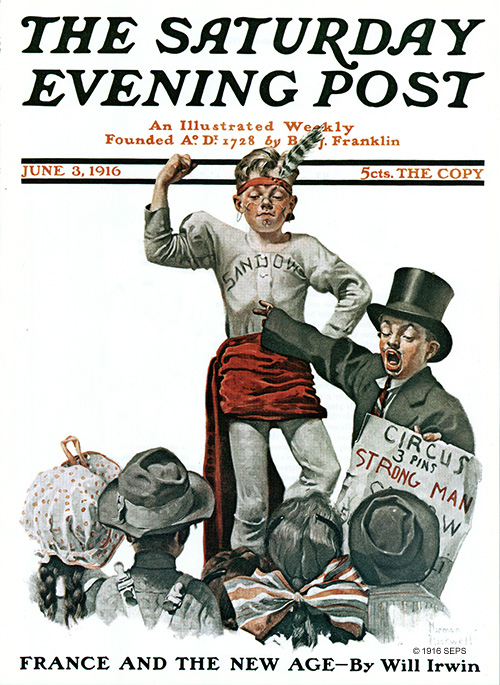
Playing the circus strongman was Billy Paine, who was in the Baby Carriage cover above as the boy smugly tipping his baseball cap to the poor babysitter. Rockwell used him in fifteen Post covers. Alas, there is a sad end to Billy’s modeling career. Paine died at age thirteen after a stunt from a second-story window. “He was the best model I ever used,” Rockwell said. The word “Sandow” is scrawled across Billy’s shirt. Eugene Sandow was a real muscle man of the era, frequently referred to as “The Father of Modern Bodybuilding.” Rockwell’s “slice-of-life” art style lead some to call him the Father of Modern Illustration. Happy anniversary, Norman!
The Old Sign Painter by Norman Rockwell
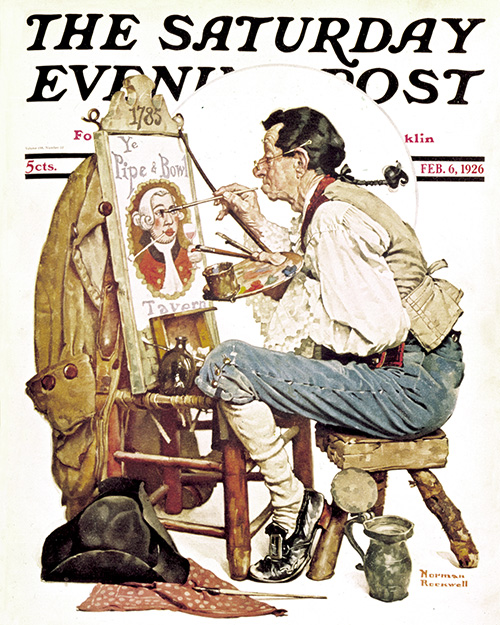
I can’t mention the first color cover in 1926 and then not show it to you. George Horace Lorimer chose Rockwell for the honor. Lorimer had an issue with the model, James K. Van Brunt, who had a face only a mother and Norman Rockwell could love. “I think you’re using that man too much,” the famous editor complained. Indeed, if you look at old Post covers, that face, usually with a big bushy mustache, kept cropping up. Rockwell broke the news to Van Brunt that he couldn’t use him again unless he shaved off that distinctive brush. The model wouldn’t, and, dejected, left. He returned to Rockwell’s studio two weeks later and said he’d do it for ten dollars. “I guess the notoriety he’d gained from posing for me had overcome his pride n his mustache.” Rockwell paid him. (For more covers with this model, enter Van Brunt in our search engine for our feature, “I Know That Face!”)
Become a Saturday Evening Post member and enjoy unlimited access. Subscribe now

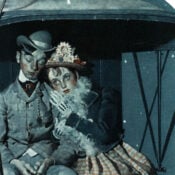
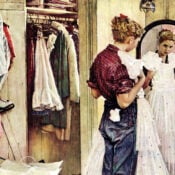

Comments
I have a Complete May 20 1916 Saturday Evening post Magazine & am Frustrated that i can’t find out how much it’s Worth…..Does anybody know ?….Or is it top worth Nothing ?
I have a May 20 1916 Complete Saturday Evening post Magazine…Rockwell’s first Cover he did for them…I can’t Find out what is Worth…Not that i want to sell it….But would like to know since just the Cover is going for $ 100 on Line….Thank you in advance !….The mag is in like New condition !!
I have a very good copy of a Rockwell Saturday evening post Dated April 23 1938 any value in these things?
Delightful Rockwell illustrations (and others); fascinating accompanying commentary.
Thank you, Ms. Denny.